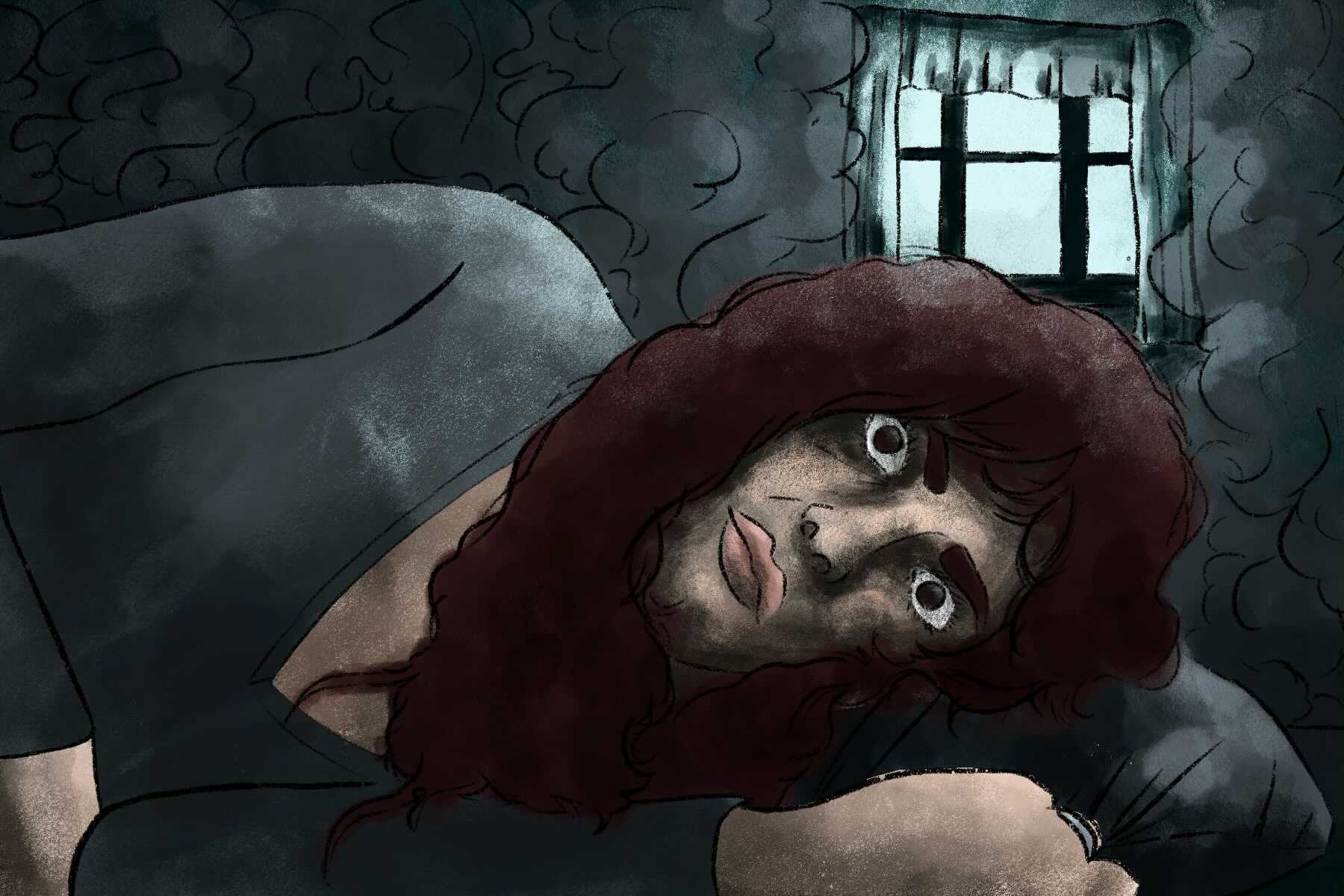“Malignant,” the new horror film from James Wan, director of “Saw,” “The Conjuring” and “Insidious,” hit theaters and HBO Max on Sep. 10. The movie’s release parallels “Halloween Kills,” another horror film that hit theaters last month after being delayed a full year due to COVID-19. While “Halloween Kills” carved out an unexpected No. 1 at the box office, “Malignant” grossed just $32 million of its $40 million budget. It’s hard to say how much the movie release’s timing affected its opening, and its 52% audience rating on Rotten Tomatoes gives the false impression of viewer apathy.
Internet reactions, however, were anything but neutral, with audience reviews throwing around phrases like “derivative” on one side, “brilliant” on the other and “insane” on both. Rotten Tomatoes summed up audience reviews by saying, “Love it or hate it – and there isn’t much in between – Malignant is one horror movie that takes risks and is willing to get weird.” Though divided by overall quality, audiences universally enjoyed the third-act plot twist that could push the film into cult classic territory in coming years and possibly spur a sequel.
Not Wan’s First Rodeo
Wan has been an accomplished horror veteran for almost two decades, and “Malignant” marks his return to the genre. With “Saw” winning the title of second highest-grossing horror franchise of all time, just behind “Friday the 13th,” Wan’s reputation as a modern horror pioneer precedes him and made expectations for “Malignant” higher than most original horror films. Despite his successes in the notoriously difficult genre, Wan is no stranger to criticism. Some of his harshest critics blame him for the rise of torture porn, a term Wan and fellow filmmaker and “Saw” screenwriter Leigh Whannell have sought to distance themselves from. Nevertheless, Wan’s importance in the genre can’t be overstated.
One article suggested Wan’s legacy alone will be enough to prompt repeat viewings and a successful home media performance that could launch the film to cult classic status. They suggest “Malignant,” though not nearly as swamped by negative reviews, will follow a path similar to Wan’s second directorial effort, “Dead Silence.” The film was panned by critics only to be resurrected from the graveyard of box-office bombs by a loyal fanbase.
Prior to its release, Wan teased the possibility of a sequel to “Malignant” and the creation of a new horror series like the successful “The Conjuring Universe,” which features no less than 12 films. The “Aquaman 2” director says he sees the film as an amalgamation of what he’s learned throughout his career and a chance to experiment further. He calls it more of a “genre bender.” He told Collider, “Hopefully I’m not making Saw again, I’m not doing Dead Silence again, I’m telling a completely brand new story.”
It’s clear that the film’s highly praised third-act plot twist is what ultimately sets it apart from the rest of the Aussie director’s oeuvre, creating potential for a sequel and pushing it into “classics” territory for the avid horror viewer. As the top review on the movie’s IMDB page reads, “Honestly, the first 1 hour and 30 mins were straight rip off of Insidious (2010) movie with no real scares. Which im sure is why some people gave it low ratings. And Im not going to lie, I was bored as heck. I felt like I wasted a bunch of time. And then the climax started to happen with HUGE REVELATION!! Which I felt was new to Horror genre. IT INSANTLY CHANGED THE STORY!! IM MIND BLOWN RIGHT NOW!!”
The Plot (Twist)
Spoilers for “Malignant” ahead.
In the opening scene, a doctor on a 1993 video log discusses a mysterious test subject named “Gabriel,” who is growing stronger and more uncontrollable by the day. Soon after, all hell breaks loose as the unseen creature goes on a murderous rampage through the hospital. The scene ends with a melodramatic zoom into Dr. Florence Weaver’s face as she says, “It is time we cut out the cancer.”
Right away, the audience is plunged into a retro aesthetic that permeates the film with a quick cut to an opening credits montage reminiscent of an early 2000s crime show. Though it goes on to cover serious topics, “Malignant” relishes in its camp from the start, though it lets its viewers forget to what extent until the end.
After the title credits, viewers meet the film’s protagonist, Madison Lake, who is played by Annabelle Wallis. Wallis previously worked with Wan as Mia in “Annabelle” (2014). Maddie is pregnant and stuck in an abusive marriage with her husband Derek, a union that has been strained by previous miscarriages. The two get into a heated argument wherein Derek attacks Madison, brutally slamming her against a wall and causing her head to bleed. She locks herself in her bedroom and falls asleep. But when she wakes up and goes downstairs, she finds that her husband has been killed by an intruder, who chases her back to their room and knocks her unconscious.
Maddie wakes up in the hospital the next morning to see her sister, Sydney, who informs her that she’s lost her unborn baby in the attack. Madison’s sister checks in on her as she struggles to adjust back home, plagued by a dark aura and sense of paranoia. Madison explains her desire to have a biological child and confesses that she was adopted at the age of eight and is unable to remember life before that.
From there, things devolve as the killer takes more victims, including Dr. Weaver from the hospital. Madison witnesses the murder in a graphic, lifelike vision that leaves her terrified and disoriented when she awakens inside her home. Madison and Sydney go to the police to tell them about her real-time visions of the grisly, though highly stylized and borderline comedic, murders.
After the continued murder of doctors (specifically those who practice child reconstructive surgery) and a visit from a hypnotherapist, Madison unlocks childhood memories of an imaginary friend, “Gabriel,” who encouraged her to do bad things, like kill her unborn sister Sydney when her adopted mother was pregnant. The detectives working the case are forced to arrest Madison when they discover damning evidence like the murder weapon in her attic, though she continues to insist she didn’t commit the crimes.
The twist is ultimately revealed when Sydney visits the abandoned, gothic-looking hospital that Gabriel first escaped out of. By watching old tapes, Sydney discovers that Gabriel is not a figment of Madison’s imagination at all but a parasitic twin who lived on the back of Madison’s body à la Voldemort and Quirrell in the first Harry Potter movie. In a scene of peak body horror and grotesqueness, Dr. Weaver and the other reconstructive surgeons are able to remove Gabriel from the back of Madison’s body by cutting off most of his teratoma-inspired form and shoving his brain into the back of her skull.
It is revealed that Gabriel had been dormant until Madison’s head injury awoke him at the start of the movie. He has been able to hijack Maddie’s body and control it backward, which explains the killer’s uncanny movements, hilarious backward crabwalk and ultimately leads to a thrillingly bonkers backward fight scene with an entire precinct. It’s also revealed that Gabriel is also able to affect Madison’s brain and has been manipulating her reality. Thus, she is unaware of having physically committed the murders.
In the climax scene, Gabriel uses Madison’s body to attack Sydney in the hospital. He is about to kill her, but Sydney stops him by addressing Madison directly. She tells Madison that Gabriel was the one that fed off of her unborn fetuses and caused all her miscarriages. Enraged and empowered, Madison is able to regain control of her body and defeats Gabriel by locking him in a cage inside her mind.
Madison then realizes that she has always had the same strength as Gabriel inside her and is able to lift a hospital bed off her sister. They hug, Sydney says they will always be sisters, related or not, and they all live happily ever after (until the implied sequel at least). The twist is not only exciting and nicely foreshadowed throughout the film, but it’s also touching. Audiences witness the film heroine, who has suffered at the hands of an abusive husband and an evil, parasitic twin, reclaim autonomy over her body and mind.
Bringing Creativity Back To The Genre
While fan reactions to the movie vary on whether its absurd, cartoonish quality is a disappointment or its crowning achievement, all audiences note that the third act and its quick devolution from classic horror to out-of-pocket psychological thriller makes it stand out from other modern horror films.
Wan’s complete artistic liberty and years of experience in both horror and action combine to make a movie that brilliantly balances its off-the-wall premise with tight action scenes, clever cinematography and moments of delightfully over-the-top acting. While viewers might not feel scared in the traditional sense, the film embraces aspects of psychological horror and body horror, all built on the foundation of real, “mundane” horrors like domestic abuse and miscarriage.
Whether the film is welcomed to the halls of the horror cult classic or not, it provides a necessary, creative catalyst to a genre always at risk of running stale. With “Malignant,” Wan joins genre-bending directors like Jordan Peele, who are revitalizing and elevating modern horror. William Bibbiani writes for The Wrap, “Malignant might not hold up to scrutiny but by the time all its mysteries are revealed, it’s clear that it was never supposed to. It’s an absurdly entertaining frightfest with a heavy emphasis on the absurd, and thank heaven — or hell — for it.”

















